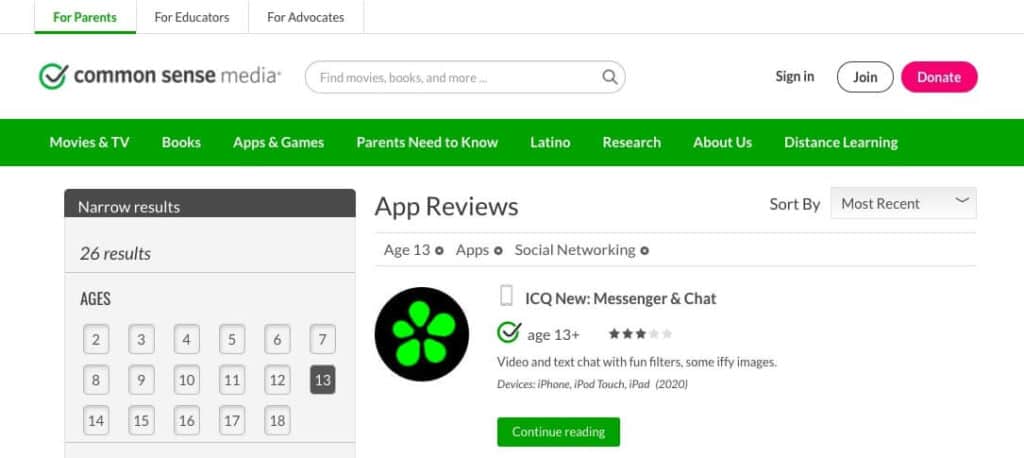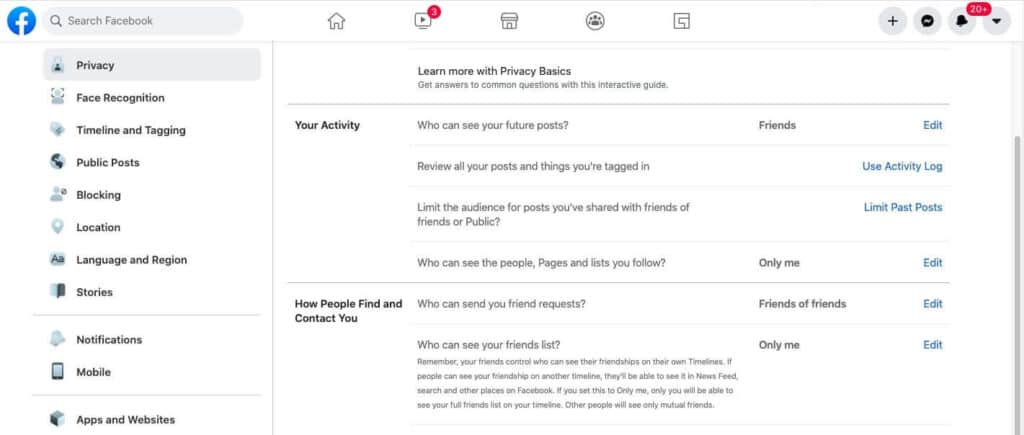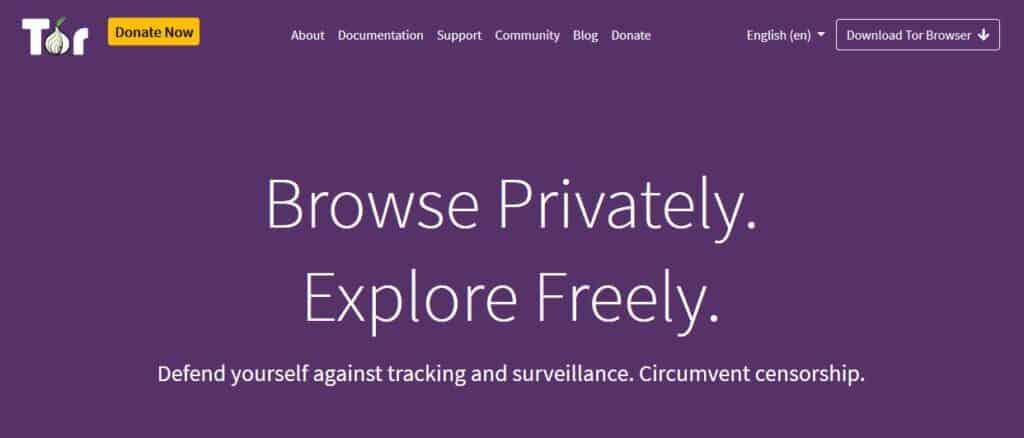
Staying connected to friends and peers online can be beneficial for children. However, it also poses significant risks. Chats conducted through a number of different platforms can expose children to dangers such as cyberbullying, scams, predators, inappropriate content, and malware.
Since it would be virtually impossible for most children to avoid online communications entirely, parents and children need to work together to ensure that online chat applications can be used safely. This includes maintaining open discussions about which platforms are being used, what topics are being discussed, and with whom.
In this parent’s guide to online chat safety, we explain the different ways children communicate online, the main risk factors, and the steps you can take to ensure your child is adequately protected.
Where are children communicating online?
There are virtually endless possibilities for ways to communicate online and most of these are easily accessible by children. Here are the main methods of communication:
- Instant messaging: While texting was popular in the past, instant messaging systems are often the chat vectors of choice for children and teens. You have the most popular services such as Messenger, WhatsApp, Snapchat, Telegram, and iMessage, but there are also many lesser-known applications such as WeChat, Tencent QQ, Viber, LINE and Kik Messenger.
- Social media: Social media platforms like Facebook, Instagram, Twitter, Twitch, and TikTok offer a variety of communication methods including posts, comments, and direct (private) messages.
- Email: While it’s less popular among children and teens, email remains a viable method of communication and is one that represents serious risks, including phishing and malware attacks.
- Chat rooms and message boards: There are a ton of opportunities for children with similar interests to chat. Some are generalised, like Teen Hut, Episode, and Go Teen. Other forums are dedicated to, or especially popular with, users with a particular interest. For example, Discord is favored among gamers. Not all forums are standalone and websites might host their own chat rooms or message boards.
- Video conferencing: While not new, video conferencing platforms became popular during the global pandemic – though many have since fizzled out. Apps typically enable groups of people to “hang out” and chat via VoIP (Voice over Internet Protocol) and video.
Children may use these platforms with or without permission from an adult, as there are very few barriers to setting up an account. Even if a platform has age restrictions, there is nothing to stop a child lying about their age when they create an account. Most of these platforms can be used on desktop and mobile devices, including internet-enabled tablets and smartphones.
What are the dangers of online chat?
Unfortunately, there are a ton of dangers related to online chat, some more serious than others, but all worth being wary of. Here are the main risks to consider:
General privacy
When signing up for and using digital platforms, many children (and adults) fail to consider what information they are handing over. Social media sites and other applications harvest personal information and track user activity around the web, often using the information for monetary gain such as through targeted advertising. Even the contents of private communications aren’t safe and the biggest tech companies have admitted to scanning emails and messages.
Cyberbullying
You don’t have to spend long on any platform (open or private) to find instances of cyberbullying. Just like offline bullying, online bullying can happen to anyone and for any (or no) reason.
However, online bullying can be particularly dangerous because of several factors, including accessibility and anonymity. For example, it’s possible for an adult man to anonymously cyberbully a teen girl in another continent without anyone else knowing it’s happening.
Cyberbullying can take a ton of different forms, including:
- Spreading of falsified information intended to cause embarrassment for or incite hate against the victim.
- Sharing of messages, images, or videos that are intended to be private and may cause discomfort to the subject.
- Publicizing information that is intended to be private.
- Conducting online polls that cause distress to the victim.
- Pages or groups formed to bully victims.
- Threats of unwanted actions such as physical harm or sexual violence.
Cyberbullying can take an extreme toll psychologically. There are far too many cases of online bullying leading to depression, anxiety, self-harm, and suicide in children, teens, and adults.
Online predators
Unfortunately, a lot of nefarious characters lie in wait to take advantage of children online. Some predators will simply scan online chat forums gathering data that could be used in online or offline attacks.
For example, they might learn about what school a child goes to, who their friends are, their interests, where they might be at a given time, and what they look like. This and other data could be used to connect with the child on or offline and quickly earn their trust.
Many predators will try to connect with children directly via chat platforms, often posing as peers or other trusted individuals such as teachers, coaches, law enforcement personnel, or even celebrities.
They might persuade children to send sexually explicit images of videos, or perform sex acts in front of a webcam. They may even arrange to meet up (which often leads to cases of physical or sexual abuse and even human trafficking). In some extreme cases, they persuade a child to “run away” to live with them.
According to FBI Supervisory Special Agent Timothy Wolford, “Social media and online applications have become the primary tool for subjects to identify, groom and sexually exploit children.”
He warns that children who create profiles with unrestricted access are found by predators “within 15-20 minutes” and will typically receive requests for “illicit pictures and videos.”
Identity theft
Perhaps surprisingly, children are attractive targets for identity theft. Minors tend to have a clean record in terms of credit, so cybercriminals don’t have to waste time with a bad credit score. In addition, children are far less likely to check their credit score, so any fraudulent activity could go unnoticed for a very long period of time.
Criminals don’t need a lot of details to carry out identity theft. And it’s surprising how easily children and teens will give up the necessary information. For example, actions like showing off a school application form containing a Social Security Number (SSN) or celebrating passing a driving test by posting an image of a driver’s license represent a goldmine for criminals. Younger children in particular may not realize the dangers when someone asks them for personal details such as their full name and home address.
According to a 2023 study by Javelin Strategy & Research, children in high-income households are most likely to have their personal information compromised. This is attributed to them being able to get online more easily through having access to multiple devices.
Malware
Just as adults are susceptible to malware making its way onto your device, children are too. Malware can be downloaded via a variety of vectors such as clicking popups or ads; downloading attachments; or clicking links in emails and messages.
Malware can take a number of forms, including worms, trojans, and adware. Of particular concern these days are ransomware and spyware. The former will usually encrypt files on your device and demand a ransom be paid in order for their safe return.
Ransomware often uses social engineering to persuade victims to pay up quickly, such that your child might try to pay the ransom themselves instead of alerting an adult.

Spyware can be incredibly dangerous for children and adults alike. Some spyware can log keystrokes to steal information such as account credentials (usernames and passwords), personal data, and financial details. This can then be used in cybercrimes such as account takeover fraud.
Some spyware can be used to hack into webcams, allowing cybercriminals to record intimate videos of their victims. These videos may be used to extort the victim into handing over money, personal information, or more videos. They may be posted online or sent to friends and family of the victim.
Phishing
Phishing is a tactic used by cybercriminals to collect information about victims via social engineering. It usually occurs through email but attempts could be carried out via text, instant messaging, in chat rooms, or over the phone.
A typical phishing email will either ask for personal information directly or include a link to a phishing site. The latter is a fake website that looks like a legitimate one, designed to steal the victim’s information.
Details that attackers may be after include account credentials (for example logins to social media, email, or online bank accounts), personal information such as full name, address and SSN, or financial information including credit card data.
Younger children can be particularly vulnerable targets for these types of attacks. They don’t tend to have the critical thinking required to detect even some of the most obvious phishing attempts.
Dark web
So far the discussion has centered around communication that happens via platforms found in the open web, but it’s worth mentioning the dark web too. The open, or clear, web is the part of the internet that’s indexed by search engines and easily accessible by anyone. However, there is a lot more to the web than that, including an often-sinister part of the internet known as the dark web.
Most children who access the dark web do so out of curiosity, but just entering it can pose risks, and lingering there and engaging in discussions could lead to some pretty grim stuff.
While not everything on the dark web is bad, it is home to a lot of illicit activity, including black markets, malware vendors, and hacker forums. The dark web is often accessed using the Tor browser, so it’s worth listening for mention of this tool from your child.
How can I help my child stay safe online?
The prospect of many of the threats above can be terrifying to parents. Thankfully, there are ways to help your child avoid many dangers and deal with those that do arise in a safe manner.
Here are our top tips to improve internet safety for your children:
- Keep an open conservation and discuss guidelines
- Help them set up online accounts
- Adjust privacy settings
- Never share personal information online
- Avoid sharing pictures
- Use parental controls
- Keep software up to date and use an antivirus
- Use a VPN
Let’s look at these in a bit more detail.
1. Keep an open conservation and discuss guidelines
One of the best things you can do for your child to help them navigate the online world is to keep an open and honest conversation going surrounding the topic. This includes educating them about the risks involved, discussing guidelines about which platforms to use and how to use them, and setting limits on where, when, and with whom they can chat online.
The topics and guidelines you discuss will vary greatly depending on your child’s age and maturity level, and the types of platforms they’re using. Examples include setting rules about staying in public chat rooms and not going to private forums or asking for a parent’s advice before accepting a friend request.
With many children, it’s important to set rules about where they may use their device to chat. If you feel you need to keep a close eye, then it could be somewhere you can easily observe the screen such as a desktop computer in a family room. Note that child predators will specifically try to persuade children to take their device to their bedroom or the bathroom, away from prying eyes.
It’s also crucial that your child knows they can come to you whenever they feel uncomfortable with a situation they find themselves in. Some of the worst scenarios arise because children feel they have nowhere to turn, for fear of judgment or punishment.
2. Help them set up online accounts
While you might prefer your child to have no online accounts at all, the safest way for children to use the internet is with guidance from you. If you help them set up their accounts, you’ll know exactly what they’re getting into.
You can conduct research together to find out about how safe specific apps are. For example, a simple search for app reviews (such as those available on Common Sense Media) should tell you if there are any major safety concerns. You can also find out more about who uses the app in terms of age and interests and what they use it for.

Most platforms impose age restrictions on their services, often because they are mandated to do so by government regulations. For example, most social media platforms set an age restriction of 13 years old or above. This is because a whole set of different privacy rules applies for platforms directed at children aged 13 and under. However, there’s nothing stopping an underage child lying about their age to set up an account.
For example, research by the Advertising Standards Authority (ASA) suggests that more than 1.6 million social media accounts are falsely registered with an adult age in the UK. Some 24% of the children who have an account with TikTok, Twitch, Snapchat, YouTube, Instagram, or Facebook said that they lied about their age when signing up.
Some platforms are specifically targeted toward younger children. Examples include Spotlite, PlayKids Talk, GoBubble, and Grom Social. These are often viewed as safer by parents, but again, there’s nothing to stop an adult posing as a child to set up an account and target minors. Many of these sites use detection measures to spot patterns of child grooming, but this doesn’t make them completely safe.
3. Adjust privacy settings
When helping your child set up an account, the first thing you should do is carefully review the privacy settings. These vary greatly depending on which platform you’re using, but usually relate to things like the type of information that may be made public and who can see and comment on your posts, send you friend requests, and message you privately.

Be sure to discuss each setting and its implications with your child as they will ultimately be in control of adjusting them later.
Also make sure your child knows how to block other users if they ever feel comfortable, and encourage them to inform you immediately about such situations.
Related: The ultimate guide to Instagram privacy; TikTok, privacy & security – should it be banned or sold?
4. Never share personal information online
This is something that needs to be drilled into children from the moment they have any kind of online freedoms. Just as we wouldn’t want our children sharing our home address and alarm code with strangers at the grocery store, we need to be extremely vigilant about the type of information they share online. And not just information about themselves. They need to know that it’s not okay to share private information about others either.
First, there’s the obvious personal information such as full name, birth date, address, phone number, and email. Parents should encourage children to use pseudonyms where possible or at least variations of their real name.
Minimal information should be provided when setting up accounts and settings should be adjusted such that things like an email address and phone number (if required for account setup) are never made public.
Of course, kids also need to be coached not to share any of this information in the body of messages, particularly those that are made public such as on message boards or in chat rooms.
In addition, children need to be educated about more subtle information-sharing. For example, discussing which school they attend, what clubs they belong to, what they look like, and where they’re going to be at a specific time, could all be dangerous in the wrong hands.
Note that it’s easy to inadvertently share some of this information by using “check-in” features on social media apps or sharing geo-tagged photos that contain metadata about the date, time, and location where the image was taken.
5. Avoid sharing pictures
This is a tricky one as many social media platforms center around image and video-sharing. If you decide that posting pictures is okay, discuss with your child about the types of images that are acceptable.
Ideally, your child shouldn’t be posting identifying pictures or videos that show their face. They should also be cautious about other identifying features in photos such as a house number, street name, or school name.
It’s highly important to discuss the repercussions of posting or sending sensitive images or videos online. While no one wants to believe their child will do this, it might be surprising how persuasive peers and predators can be.
It’s crucial that your child knows that once these images or videos are out there, it’s virtually impossible to “get them back.” Even if they believe they are sending them to a trusted person in a private forum, it’s all too easy for content to be shared.
Aside from the potential of psychological damage, there are other repercussions for sending or posting sensitive media. Sharing explicit images or videos of a minor (even if it’s of themselves) constitutes a child pornography offence in many jurisdictions and is punishable by law.
Bear in mind, these conversations need to happen in a manner that leaves the door open in case mistakes are made. Of course, children do make errors in judgement even after being coached, so they need to know it’s okay to come to you with any problem they’ve encountered.
6. Use parental controls
Some apps that are targeted toward children offer parental controls that can be used to censor what your child sees, control how they use the app, or view usage details.
For example, Facebook’s Messenger Kids app allows parents to see recent contacts, chat history, image logs, reported and blocked contacts history, and more. But if your child is using an app that is targeted to older children and adults, you’ll likely have very limited access to such information.
Thankfully, there are a whole range of parental control apps you can use to monitor and control device and app use in the home. For example, the Qustodio Parental Control app works with a wide range of devices and lets you filter and monitor internet usage.
7. Keep software up to date and use an antivirus
We mentioned malware above and there are ways you can prevent malicious software entering or affecting your child’s device. To start, children should be advised not to click on links and attachments in emails or messages unless they are certain they are safe.
Obviously, mistakes can happen. After all, plenty of adults click on phishing links and attachments all the time. As such, it’s good to have additional safety measures in place.
Keeping operating systems and applications up to date is often overlooked, but very important. Updates often patch security holes, making your computer or mobile device less susceptible to malware targeting those vulnerabilities.
Using a good antivirus software is also crucial in the fight against malware. An antivirus can spot known malware and block it from installing on your device. If it does end up on your device somehow, your antivirus may be able to detect and remove it.
8. Use a VPN
A Virtual Private Network (VPN) is another must-have security tool. This will encrypt all of the traffic flowing to and from your device which makes it unreadable to snoopers, including hackers.
This is especially important if your child tends to connect to public wi-fi often. These networks rarely operate in a secure manner and offer opportunities for criminals to steal data such as passwords and credit card information. While it’s best to avoid logging into accounts or making purchases while connected to public networks, if it’s absolutely necessary, a VPN can protect your data.
VPNs also hide the users’ IP address, making it more difficult for predators to pinpoint where they’re connecting from.
However, it pays to be aware that a VPN can also be used to bypass content restrictions you might have set with your ISP. If you’re worried about this, talk to them and explain why the restrictions are in place. You can additionally disable the ability to install VPN extensions in browsers like Firefox or Chrome. You can also block your kids from downloading apps from the Google Play Store or App Store.






